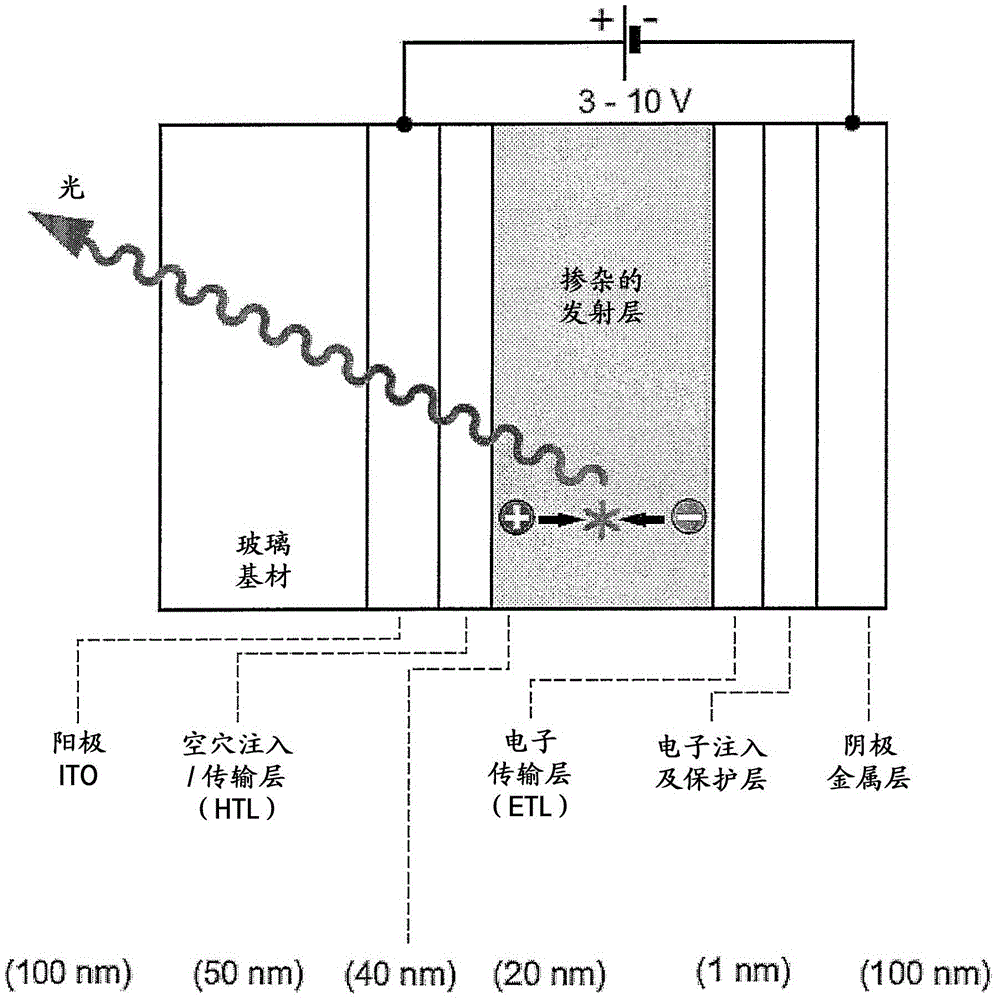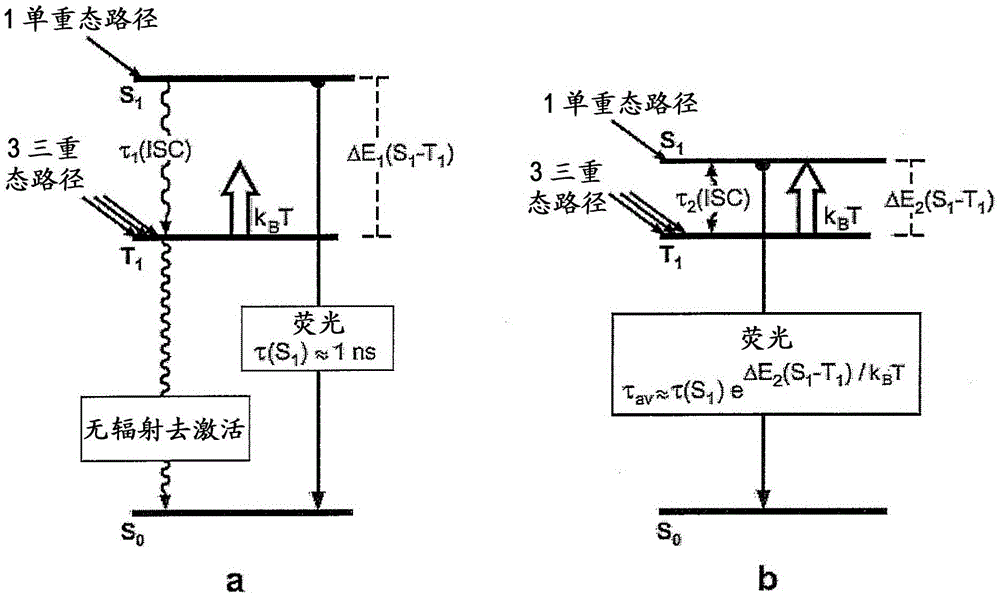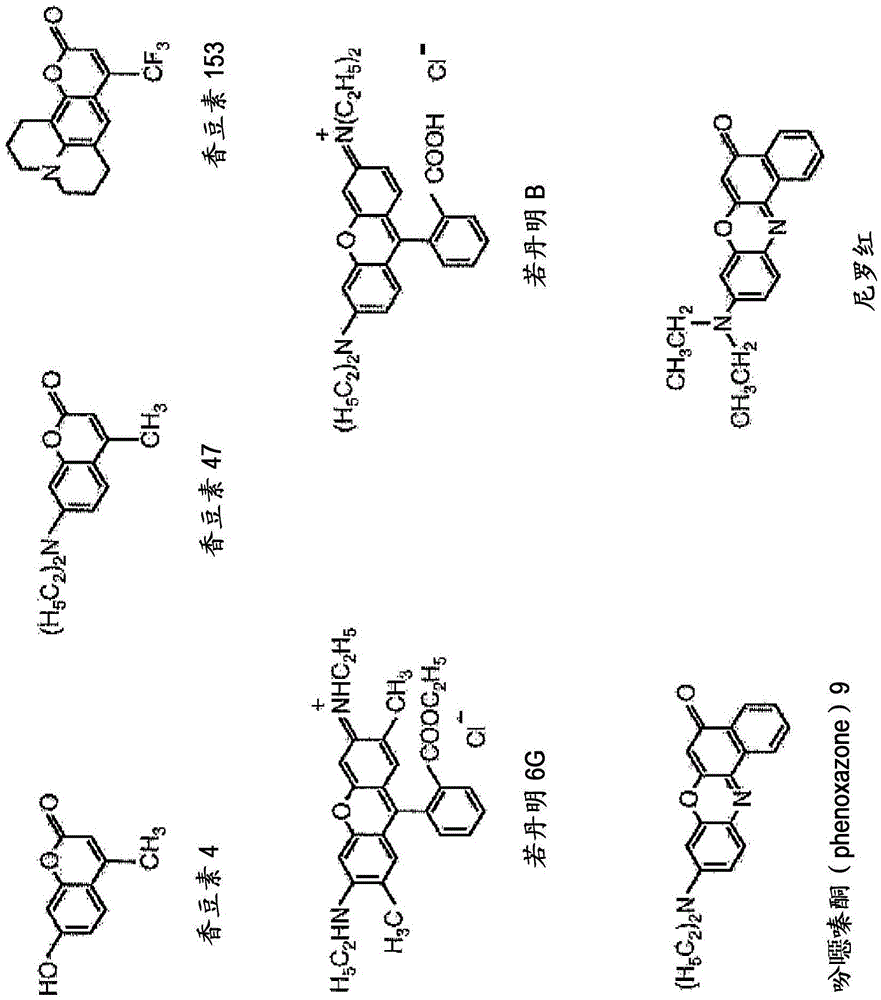Harnessing singlet state trapping of organic molecules for optoelectronic devices
A technology of organic molecules and optoelectronic devices, applied in the field of organic pigments as emitters in OLEDs and other optoelectronic devices, can solve problems such as insufficient long-term stability
- Summary
- Abstract
- Description
- Claims
- Application Information
AI Technical Summary
Problems solved by technology
Method used
Image
Examples
Embodiment Construction
[0107] Different examples include loaded organic molecules and counterions. These emitter molecules can preferably be used in light-emitting electrochemical cells (LEECs or LECs), the theoretical construction of which is known to the skilled person. When applying this loaded organic molecule in an OLED, it may be recommendable to use a larger counterion with the same charge, such as (PF 6 ) - , (BF 4 ) - 、[CF 3 SO 2 ] - , single negatively charged hexa-phenylphosphate, single negatively charged tetraphenylborate, etc., instead of smaller counter ions.
[0108] A few examples - Molecules are symmetrically structured on the surface and thus contain no separate D-groups or A-groups on the surface. However, the molecule is polarized in solution and / or by the action of a counterion, leading to a corresponding donor- or acceptor-action.
PUM
 Login to View More
Login to View More Abstract
Description
Claims
Application Information
 Login to View More
Login to View More - R&D
- Intellectual Property
- Life Sciences
- Materials
- Tech Scout
- Unparalleled Data Quality
- Higher Quality Content
- 60% Fewer Hallucinations
Browse by: Latest US Patents, China's latest patents, Technical Efficacy Thesaurus, Application Domain, Technology Topic, Popular Technical Reports.
© 2025 PatSnap. All rights reserved.Legal|Privacy policy|Modern Slavery Act Transparency Statement|Sitemap|About US| Contact US: help@patsnap.com



